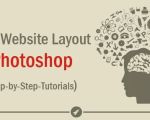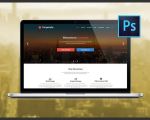- 1-understanding-the-importance-of-user-friendly-design
- 2-key-elements-of-user-friendly-website-design
- 3-optimizing-navigation-and-layout-for-ease-of-use
- 4-enhancing-website-speed-and-performance
- 5-mobile-responsiveness-and-accessibility
- 6-leveraging-content-and-visuals-to-engage-users
- 7-real-world-examples-and-success-stories
- 8-where-to-find-expert-resources-for-user-friendly-web-design
Understanding the Importance of User-Friendly Design
In today’s digital economy, a business website serves as the frontline of customer interaction. How easy and enjoyable your website is to use directly impacts visitor engagement, trust, and ultimately conversions. A user-friendly website design reduces frustration, encourages longer visits, and fosters loyalty. Poor design, on the other hand, drives potential customers away before they even explore your offerings.
Beyond aesthetics, usability is paramount. A visually attractive site that’s confusing to navigate fails its purpose. This is why understanding how to create a user-friendly website design for your business is essential. It combines intuitive navigation, clear calls to action, fast loading times, and accessible content—all working together to create a seamless experience.
Key Elements of User-Friendly Website Design
Simple and Consistent Layout
A clean layout with consistent colors, fonts, and spacing helps users feel comfortable and oriented. Cluttered or inconsistent designs cause confusion and reduce trust. Using grids and white space strategically enhances readability and focus.
Clear Navigation Structure
Effective navigation menus and clear labeling allow visitors to find information quickly. Dropdowns, breadcrumb trails, and search bars support user exploration without overwhelm.
Readable Typography
Legible fonts at appropriate sizes improve comprehension. Avoid overly decorative fonts and maintain contrast between text and background for accessibility.
Enhancing Website Speed and Performance
Website loading speed significantly influences user experience and search engine rankings. Studies show users expect pages to load within 2-3 seconds; delays lead to increased bounce rates. Optimizing image sizes, leveraging browser caching, and using efficient coding practices improve speed.
Regular performance testing identifies bottlenecks and areas for improvement. Fast, smooth-loading sites reflect professionalism and keep visitors engaged longer.
Mobile Responsiveness and Accessibility
With mobile devices accounting for a majority of web traffic, designing for responsiveness is no longer optional. Your website should adapt seamlessly to various screen sizes and devices, ensuring usability on smartphones and tablets.
Accessibility goes hand-in-hand with responsiveness. Providing alternative text for images, keyboard navigation, and ensuring color contrasts meet standards benefits users with disabilities and enhances SEO.
Leveraging Content and Visuals to Engage Users
Compelling, relevant content is crucial for retaining visitor interest. Use concise, clear language aligned with your brand voice. Break content into manageable sections with headings to improve readability.
Visual elements like images, videos, and infographics complement text and communicate messages quickly. However, balance is key—overuse can slow the site and overwhelm users.
Real-World Examples and Success Stories
Consider a small business that revamped its website by simplifying navigation and improving mobile responsiveness. After implementation, they saw a 40% increase in average session duration and a 25% boost in online inquiries. Their story underscores how focused improvements in user-friendly design can translate into tangible business growth.
Another case involved a startup integrating clear calls to action and performance optimizations, resulting in a 50% increase in conversion rates within three months. These examples highlight the powerful impact of user-friendly design strategies.
Where to Find Expert Resources for User-Friendly Web Design
For businesses looking to elevate their website design, resources like SitePoint 24 offer comprehensive services, tools, and expert guidance. They provide tailored solutions to create user-friendly websites that align with your business goals and customer expectations.
Exploring such platforms can save time, ensure best practices, and deliver professional results that keep your business competitive online.








